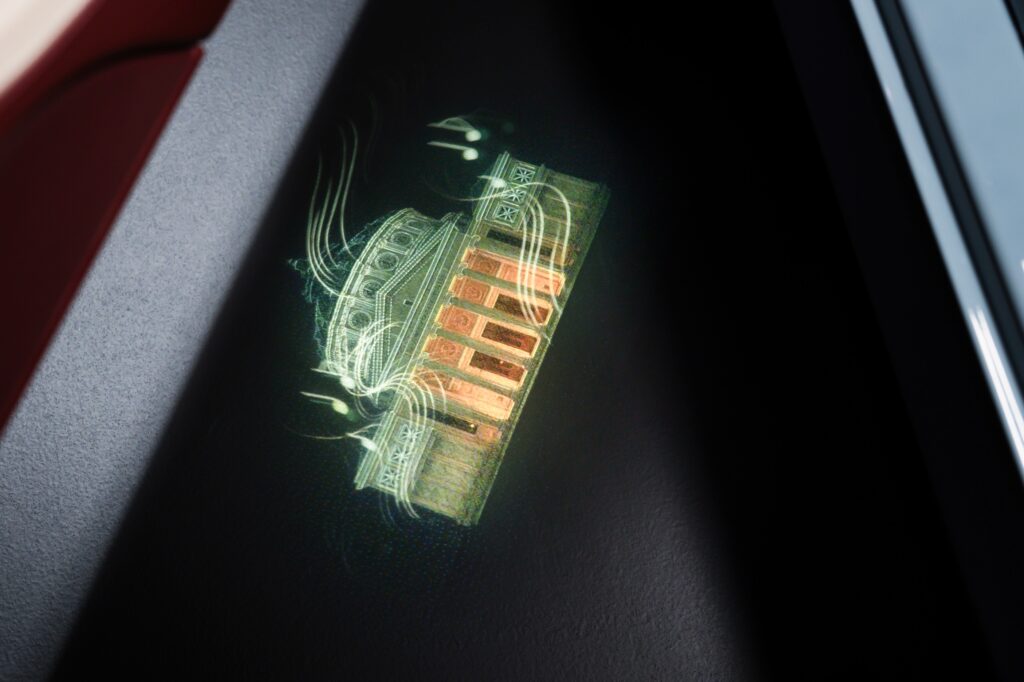
Bentley has expanded its use of digital light processing, a technology first seen on the coachbuilt Batur, to offer owners a new level of personalisation. The brand is now applying DLP to create custom animated welcome projections that appear on the ground as the doors open.
For a company known for shaping wood, leather and metal by hand for more than a century, this shift signals a move toward what Bentley calls digital craftsmanship. The idea is simple: instead of using light only for visibility, it becomes part of the car’s design identity.
Each projection includes an opening sequence when the door unlocks, followed by a looping animation that remains active while the door is open. Designers can use existing cabin or exterior themes as inspiration, turning details like embroidery patterns into animation. These can be minimal, such as a stylised signature, or more detailed, like a drifting feather.
One recent example appeared on a Mulliner project inspired by the Romanian Athenaeum Concert Hall in Bucharest. The custom animation blended elements from the cabin, including headrest embroidery and dashboard motifs, with musical accents represented by moving notes.
The system behind this effect is more complex than a typical puddle light. It uses three coloured light sources, five lenses and two prisms to feed an 8 mm² Digital Micromirror Device. This chip contains 415,800 micromirrors, each just 16 microns wide, that tilt thousands of times per second to create moving images. Light reflected from the active mirrors forms the picture, while unused light is directed into a heat sink. After passing through another set of lenses, the animation appears on the ground beside the car.
While welcome projections are not new in the luxury segment, Bentley’s use of DLP enables far more intricate images than static logos or simple patterns. It also hints at how lighting may evolve as a design element in future models, blending traditional craftsmanship with digital expression.
